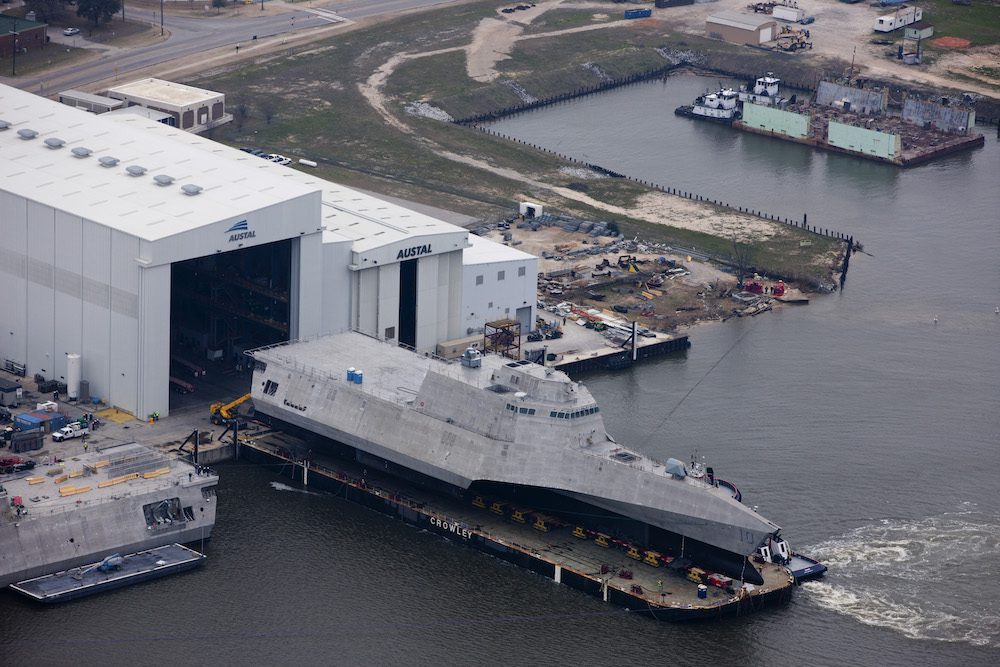BEIJING (Dow Jones)–China has begun operating a homegrown satellite navigation service that is designed to provide an alternative to the U.S. Global Positioning System and, according to defense experts, could help the Chinese military to identify, track and strike U.S. ships in the region in the event of armed conflict.
The Beidou Navigation Satellite System started providing initial positioning, navigation and timing services to China and its “surrounding areas” on Tuesday, Ran Chengqi, a spokesman for the system, told a news conference.
He said China had so far launched 10 satellites for the Beidou system, including one this month, and planned to put six more in orbit in 2012 to enhance the system’s accuracy and expand its service to cover most of the Asia Pacific region.
The system isn’t believed to be as accurate as the U.S. GPS. Nonetheless, China has made significant advances in the field thanks to a spate of satellite launches since 2009, according to a paper by Eric Hagt and Matthew Durnin published in the Journal of Strategic Studies in October.
“Although China still has a long way to go before it has continuous real-time tactical coverage, even of a regional maritime environment, it now has frequent and dependable coverage of stationary targets and at least a basic ability to identify, track and target vessels at sea,” they wrote.
“Based purely on capabilities, with a space-based reconnaissance system as the backbone, China is clearly acquiring greater ability not only to defend against intruding aircraft carriers but to project force as well.”
China’s Ministry of Defense didn’t immediately respond to a request for comment. Beidou–which means Big Dipper in Mandarin–is run by the China Aerospace Science and Technology Corp., one of the main state-owned contractors for the Chinese space program, which is largely controlled by the Chinese military.
China began building Beidou in 2000 with the goal of creating its own global system– called Compass–with 35 satellites, by 2020. The only other operational global system apart from GPS is Russia’s Glonass, although the European Union’s Galileo system is due to be completed by 2020.
Beidou, like GPS, will provide free civilian services that can be used in conjunction with commercially developed applications for use by drivers in private cars, monitor commercial trucks and ships and assist in natural disasters. It has the added advantage of supporting SMS messages, according to Mr. Ran.
He didn’t mention potential military applications at the news conference, a transcript of which was provided by the information office of China’s State Council, or Cabinet.
But the system will also give the Chinese military an alternative to GPS, which was developed by the Pentagon and is still controlled by the U.S. government. The U.S. could, in theory, disable or deny access to the system by others in the event of a conflict, although it says it never has done so in the past.
Military experts see Beidou as part of China’s efforts over the last 15 years to develop capabilities designed to deny or hinder U.S. naval access to waters around its shores in case Washington tries to intervene in a conflict–over Taiwan, for example, which Beijing sees as a rebel province.
The South China Sea is another potential flashpoint as tensions have been rising this year between China and neighboring countries that also claim territorial waters there. Beijing has repeatedly accused the U.S. of meddling in the issue and has warned it to cease surveillance operations in the area.
This year, China confirmed for the first time that it was developing an antiship ballistic missile that the Pentagon says may already be basically operational and eventually capable of hitting a moving aircraft carrier up to 1,700 miles, or 2,700 kilometers, from China’s shores.
Beidou could be used in conjunction with other satellites, drones and related technology to help track U.S. ships, position its own submarines and other vessels, and guide antiship ballistic missiles towards their targets, according to military experts.
It also gives China a significant tactical advantage over neighbors with whom it has territorial disputes, including India, which is developing its own regional satellite navigation system but doesn’t expect to complete it for several years.
China still lags behind the U.S in terms of how long, and how accurately, it can monitor any part of the globe from space: GPS, which was launched for civilian use in 1995, now consists of 30 satellites and can be accurate to within less than 10 meters, or 33 feet, although the U.S. military has access to more precise readings.
Mr. Ran said Beidou was accurate to within 25 meters and would reduce that to 10 meters by the end of next year. The Chinese military may also have access to more accurate data, but because China has fewer satellites, it cannot monitor the same spot for as long as the U.S.
China’s plans to develop a satellite positioning system are thought to date back to 1983 when Ronald Reagan announced plans to build space-based missile-defense systems in what became known as his “Star Wars” speech.
Beijing’s plans gained momentum after its military leaders noted the importance of GPS for U.S. forces during the first Gulf War in 1991. Five years later, Chinese military commanders were frustrated when they couldn’t locate two carrier groups that the U.S. deployed near Taiwan after China fired missiles into the sea off the island’s coast in a failed attempt to influence the outcome of an election there, according to several defense analysts.
China launched the first two satellites of an experimental system called Beidou-1 in 2000 and made it available to civilians in 2004, but the service wasn’t popular as its associated devices used to access the system–called terminals–were relatively large and much more expensive than GPS ones.
The system has been used, however, to coordinate the movement of Chinese troops, to help border guards patrol in remote areas, and to track fishing vessels in the South China Sea, according to Chinese state media.
In 2007, China launched the first satellite of its second-generation system, called Beidou-2, which is thought to use cheaper terminals and, unlike its predecessor, doesn’t require a ground station.
Mr. Ran said Beidou was now being used by more than 100,000 clients in China and had been used to help track government vehicles in the southern province of Guangdong, and to assist disaster-relief work after an earthquake in the western province of Sichuan in 2008.
He said it was compatible with the world’s other major global satellite navigation systems, and encouraged Chinese and foreign enterprises to help develop terminals that could use the Chinese network.
A preliminary version of the system’s Interface Control Document, which allows foreign and Chinese entities access to its basic technical data, was made available on the system’s website, beidou.gov.cn, from Tuesday, he said.
-By Jeremy Page, The Wall Street Journal
Unlock Exclusive Insights Today!
Join the gCaptain Club for curated content, insider opinions, and vibrant community discussions.

 Join The Club
Join The Club













